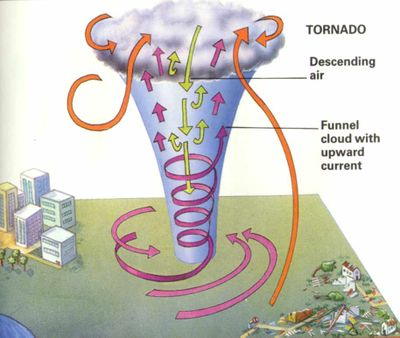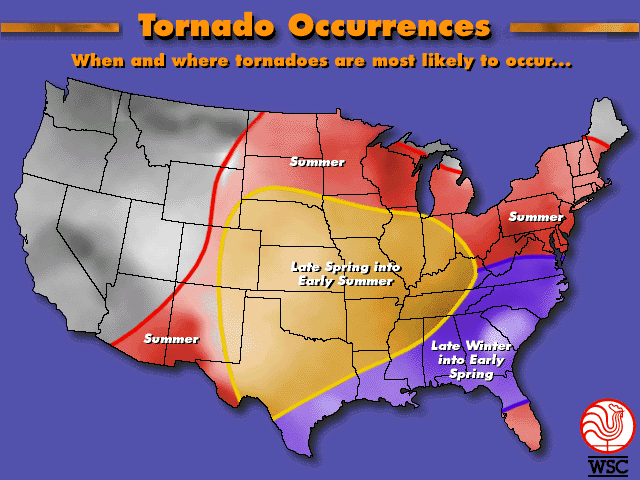

Tornadoes form in thunderstorms, when unstable hot air near the ground rises and meets cooler air above in thunder clouds. Tornadoes can form at any time of the year, but most form from March to August ( in the Northern Hemisphere).


In the Northern Hemisphere
(north of the equator),
most tornadoes rotate in a
counterclockwise direction
 I
I
n the Southern Hemisphere
(south of the equator),
most tornadoes rotate in a
clockwise direction
* The rotating winds produce strong storm clouds about 70,000 feet high, sometimes spreading 10 miles wide.
* The average wind speeds in most tornadoes are about 112 miles per hour or less. Winds in the most extreme tornadoes can be over 300 miles per hour
Tornado Ranking
Tornadoes are ranked
using a scale called the Fujita Scale, five categories of wind speed that are
estimated by the damage left behind!
|
F-0 |
40-72 mph |
Light damage, chimney damage, tree branches broken |
| F-1 | 73-112 mph | Moderate damage, mobile homes pushed off foundation or flipped over |
| F-2 | 113-157 mph | Considerable damage, mobile homes demolished, trees uprooted |
| F-3 | 158-205 mph | Severe damage, roofs and walls torn down, trains overturned, cars thrown around |
| F-4 | 207-260 mph | Devastating damage, well-constructed walls leveled |
| F-5 | 261-318 mph | Violent damage, homes lifted off foundation and carried considerable distances, auto thrown as far as 100 meters |
